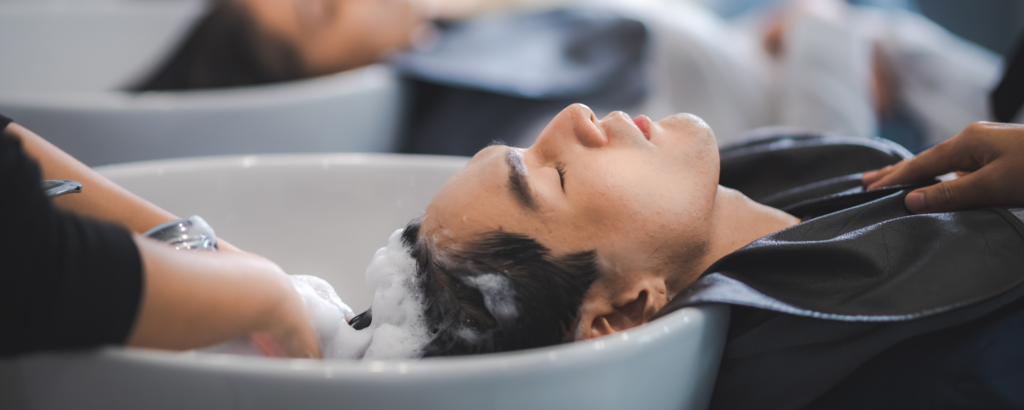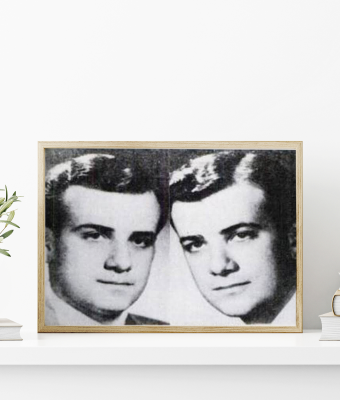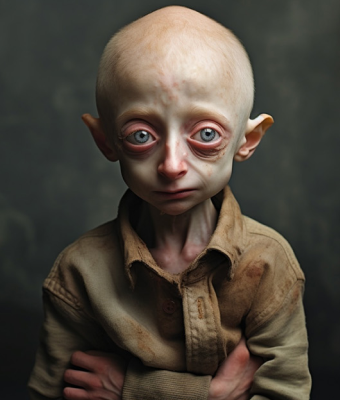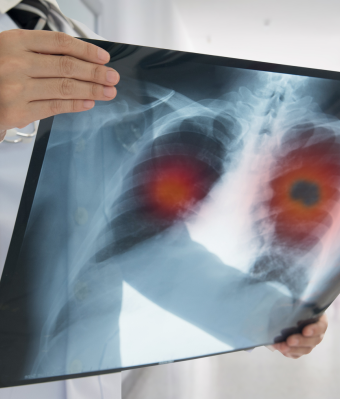In the expansive and ever-evolving world of medicine, healthcare professionals are frequently encountering medical scenarios that are as bewildering as they are enlightening. “Medical Case Studies 2024” is a meticulously curated compendium that delves into a myriad of rare and peculiar medical phenomena from across the globe. This collection is tailored specifically for healthcare practitioners eager to stay abreast of the latest developments that push the boundaries of modern medical science.
Through this carefully selected series of articles, readers will embark on an explorative journey into the world of unusual medical conditions, some of which they may have never encountered. From the depths of rare genetic disorders to the frontline of surgical interventions and the unique clinical presentations that defy conventional understanding, these case studies serve as a portal to the extraordinary aspects of medical practice. Each case is a testament to the complexity and marvels of human health and disease, offering a rich tapestry of insights that enhance professional knowledge and understanding. Join us in this enlightening expedition, as we unravel the mysteries and showcase the innovations at the forefront of medical science.
Medical Case 1: Understanding Rare Genetic Disorders
In the realm of medical science, rare genetic disorders present a unique and complex challenge. These conditions, often resulting from mutations in a single gene, can have profound impacts on the health and development of affected individuals. Understanding these disorders is crucial, not only for the management and care of those directly affected but also for advancing our broader knowledge of human genetics and disease mechanisms.
Hutchinson-Gilford Progeria Syndrome

HGPS, or commonly known as Progeria, is a striking medical case example of such a rare genetic condition. Progeria is extremely rare, affecting just 1 in 4 million live births worldwide. Globally, approximately 400 children and young adults grapple with this condition. Characterized by accelerated aging in children, Progeria provides a window into the intricate interplay of genetics, developmental biology, and the aging process.
Hutchinson-Gilford Progeria syndrome stems from a mutation in the LMNA gene, located on chromosome 1. This mutation leads to the development of an abnormal protein called Progerin, which accumulates within the nucleus of cells. Progerin disrupts the structural integrity of the cell’s nucleus, causing it to take on an irregular shape. Most cases arise from spontaneous LMNA mutations, not inherited, often in sperm cells before conception. Researchers are trying to figure out how these alterations result in the symptoms of Hutchinson-Gilford Progeria syndrome.
The article “About Hutchinson-Gilford Progeria Syndrome” delves deep into the nuances of this condition, exploring its genetic underpinnings, clinical manifestations, and the relentless quest for effective therapies. This exploration not only sheds light on Progeria itself but also contributes to our understanding of genetic disorders as a whole, illustrating the challenges and opportunities inherent in this field of medical science.
Medical Case 2: Cardiovascular Emergencies
Cardiovascular emergencies stand as one of the most daunting medical case challenges in the realm of modern medicine, with heart attacks notably at the forefront as a leading cause of death globally. These medical crises demand not only swift and decisive medical intervention but also a nuanced understanding of their diverse presentations and underlying causes. The gravity of these emergencies is underscored by their often sudden onset, where symptoms may rapidly escalate, leaving little room for delay in treatment. Such emergencies encompass a range of conditions, from acute myocardial infarctions to life-threatening arrhythmias, each requiring a tailored approach based on the patient’s unique medical history and the specifics of the condition.
The heartbreakingly high toll of cardiovascular disease in South-East Asia is enough to make anyone’s pulse race. With a staggering 4 million lives lost annually, CVD is the grim reaper of the region, responsible for nearly one-third of all deaths. Heart attacks have been on the rise in recent years and can be life-threatening. They are typically caused by a combination of lifestyle and genetic factors.
The Widowmaker Heart Attack

While all heart attacks require urgent medical attention, the most perilous medical case is known as a STEMI (ST-segment elevation myocardial infarction), also called a “widowmaker” heart attack. The term “widowmaker” derives from its lethal nature, as it poses a significant threat to one’s life.
The article, “The Widowmaker: A Deadly Heart Attack You Need to Know About,” delves into the specifics of this formidable cardiovascular emergency. It highlights the factors contributing to its lethality, such as the blockage of a key artery that supplies blood to the heart, and underscores the critical importance of early recognition and prompt intervention. This exploration is not only a call for heightened awareness but also an educational guide on the crucial steps to take when faced with such a dire cardiac event.
Medical Case 3: Exploring Neuropsychiatric Phenomena
Neuropsychiatric phenomena encompass a wide range of conditions where neurological and psychiatric symptoms intersect, presenting complex challenges in both diagnosis and treatment. These phenomena can manifest as a diverse array of symptoms, from cognitive and emotional disturbances to unusual behavioral responses, often stemming from intricate and sometimes unclear interactions within the brain. Conditions classified under this category are particularly fascinating because they blur the traditional lines between neurology, which deals with the physical aspects of brain function, and psychiatry, which focuses on mental and emotional well-being.
Neuropsychiatric disorders can arise from a variety of causes, including genetic predispositions, traumatic brain injuries, infections, degenerative diseases, and even environmental factors. They often require a holistic treatment approach that addresses both the physiological and psychological aspects of the condition. The study of neuropsychiatric phenomena not only provides critical insights into how our brains function and how neurological disorders can influence behavior and cognition but also challenges and expands our understanding of the mind-body connection in health and disease.
The Jumping Frenchmen of Maine

Among these, The Jumping Frenchmen of Maine stands out as a particularly peculiar neuropsychiatric condition. This rare disorder, hallmarked by an unusually exaggerated startle reflex, opens a window into the complex interplay between neurology and psychiatry. The condition not only challenges our comprehension of neurological responses but also poses questions about the influence of cultural and environmental factors on neuropsychiatric symptoms.
The article, “The Jumping Frenchmen of Maine: A Rare Clinical Syndrome,” delves into this enigmatic disorder, exploring its distinctive symptoms and the significance it holds in the broader context of neuropsychiatric research. By examining such unusual conditions, we gain valuable insights into the myriad ways the human brain can react to stimuli and how these reactions can manifest into extraordinary behavioral patterns. This exploration is crucial for developing a more comprehensive understanding of neuropsychiatric disorders and for advancing the field of neurological science.
Medical Case 4: Tragic Tales in Medicine
In the world of medicine, not all stories have a happy ending, and some are marked by profound tragedy and complexity. This “Tragic Tales in Medicine” section delves into the deeply human aspect of healthcare, where the lives of patients and medical professionals intertwine in narratives that often go beyond medical textbooks and treatment rooms. These stories, steeped in both personal and professional challenges, shed light on the emotional and psychological burdens that accompany the pursuit of healing and care. They remind us that behind every medical case, there is a human story filled with hopes, fears, struggles, and sometimes, heartrending outcomes.
These tales not only offer a more nuanced understanding of the medical profession but also highlight the resilience, compassion, and dedication required to navigate its often turbulent waters. They serve as poignant reflections on the complexities of life, illness, and the impact of healthcare decisions, reminding us of the weighty responsibilities shouldered by those in the medical field and the profound effects these can have on both caregivers and those they serve.
The Mysterious Twin Gynecologists

A poignant example of this is the story of Dr. Cyril C. Marcus and Dr. Stewart L. Marcus, identical twin gynecologists whose lives and untimely deaths present a compelling and perplexing tale. In “The Mysterious Tale of the Twin Gynecologists,” the intricate details of their professional journey and the circumstances surrounding their demise are explored, shedding light on the often hidden and complex challenges that medical practitioners face.
These challenges extend beyond the rigors of medical practice, delving into the psychological and emotional tolls that can accompany a life dedicated to healthcare. The story of the Marcus twins is more than just a recounting of events; it serves as a poignant reminder of the multifaceted nature of the medical profession, where personal struggles and professional responsibilities can intersect in unexpected and sometimes tragic ways.
Medical Case 5: Cancer Indicators
In the realm of oncology, recognizing the early indicators of cancer is paramount for timely diagnosis and effective treatment. Cancer, a complex and often insidious disease, doesn’t always present with clear-cut symptoms, especially in its early stages. The indicators of cancer can be subtle and varied, manifesting differently depending on the type and location of the cancer within the body.
Early detection of cancer significantly improves the chances of successful treatment and survival, making it crucial for individuals to be attentive to their bodies and seek medical advice when they notice anything unusual. Additionally, routine screenings and awareness campaigns play a critical role in highlighting these cancer indicators, encouraging early medical intervention and facilitating better health outcomes.
Unusual Symptoms to Watch Out For

The battle against cancer hinges significantly on early detection, and understanding the less obvious signs can be a key factor in this endeavor. “The Surprising Cancer Symptoms on Nails and Nine Other Warning Signs to Look Out For” is an insightful article that sheds light on some of the more unusual and often overlooked symptoms that could indicate the presence of cancer.
While most are familiar with common signs like lumps or drastic weight loss, this article emphasizes the importance of paying attention to more subtle changes in the body, such as abnormalities in the nails, which could signal underlying health issues including cancer. These indicators might be easy to dismiss as minor or unrelated to serious conditions, but they can provide crucial early clues in diagnosing and initiating treatment for cancer.
By exploring these lesser-known symptoms, the article aims to enhance awareness and understanding, empowering individuals to monitor their health proactively and seek medical advice when they observe unusual changes. This approach to recognizing early signs is essential not just for those at risk or in regular screening programs, but for everyone, as early intervention often leads to more effective treatment outcomes. The article serves as an invaluable resource for both the public and healthcare professionals, highlighting the need for vigilance and a broader perspective when it comes to identifying the potential warning signs of cancer.
Medical Case 6: Unexpected Medical Events
In the world of healthcare, certain medical events stand out for their unexpected nature, occurring in the midst of everyday activities that seem innocuous. These incidents remind us that health emergencies can arise in the most routine of circumstances, often catching individuals off guard. This section delves into these rare but significant occurrences, shedding light on how common actions can sometimes lead to serious health consequences.
Beauty Parlour Stroke Syndrome

A striking example of this is the Beauty Parlor Stroke Syndrome, a rare but real phenomenon where something as routine as a hair wash at a salon can trigger a stroke. The article “Beauty Parlour Stroke: What Triggers Stroke During Hair Wash at Salon; How to Prevent It” explores this surprising medical event, examining the causes behind such an occurrence and offering insights into preventive measures.
Understanding these uncommon medical events is crucial, not only for healthcare professionals but also for the general public, as it heightens awareness of the potential risks in daily life and underscores the importance of being vigilant about seemingly minor symptoms or situations. This knowledge empowers individuals to make informed decisions about their health and safety in everyday settings.
Medical Case 7:Neurological Curiosities
Neurological curiosities represent a fascinating segment of medical science, where the mysteries of the brain manifest in extraordinary and often bewildering ways. These conditions, ranging from rare disorders to unusual syndromes, challenge our conventional understanding of how the brain perceives, processes, and interacts with the world. They are marked by unique symptoms — such as altered sensory perceptions, unusual cognitive experiences, and atypical motor responses — that can seem almost surreal.
Exploring these neurological anomalies is crucial, not just for their rarity or the intrigue they inspire, but for the valuable insights they provide into the intricate workings of the human brain. Each case of neurological curiosity, be it a well-documented syndrome or a newly discovered condition, contributes to our growing understanding of neural pathways, brain plasticity, and the complex interplay between neurological and psychological processes. These curiosities not only highlight the diversity of human brain function but also underscore the importance of continued research in uncovering the hidden capabilities and adaptabilities of our most enigmatic organ.
Alice in Wonderland Syndrome

A prime example of such a condition is Alice in Wonderland Syndrome (AIWS), a rare and fascinating neurological disorder characterized by distorted perceptions and a sense of altered reality. The article “Alice in Wonderland Syndrome” provides an in-depth look at this intriguing condition, exploring the various symptoms experienced by those affected and the underlying neurological mechanisms.
Conditions like AIWS not only offer insights into the myriad ways the brain can function differently but also help in broadening our understanding of human cognition and perception. Studying these neurological curiosities enhances our knowledge of the brain’s workings in health and disease, providing valuable lessons that extend beyond the realm of neurology.
Conclusion
These medical case studies not only illuminate the peculiarities and rarities in medicine but also underscore the importance of continuous learning and awareness in the field. For medical professionals and enthusiasts alike, understanding these unique medical phenomena enhances our collective knowledge, empathy, and ability to respond to the diverse health challenges faced by people around the world.
About Docquity
Docquity is an AI-based state-of-the-art private & secure continual learning network of verified doctors, bringing you real-time knowledge from thousands of doctors worldwide. Today, Docquity has over 400,000 doctors spread across six countries in Asia. Meet experts and trusted peers across Asia where you can safely discuss clinical cases, get up-to-date insights from webinars and research journals, and earn CME/CPD credits through certified courses from Docquity Academy. All with the ease of a mobile app available on Android & iOS platforms!






